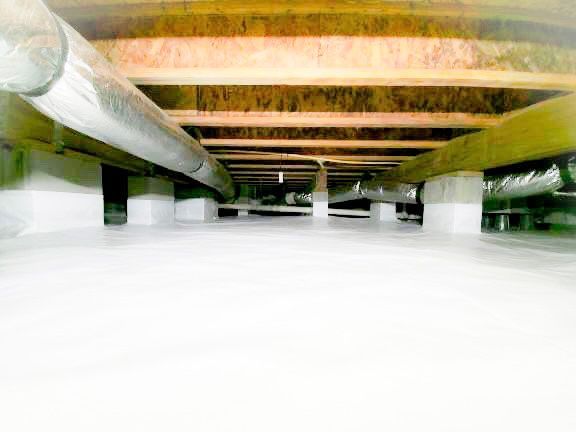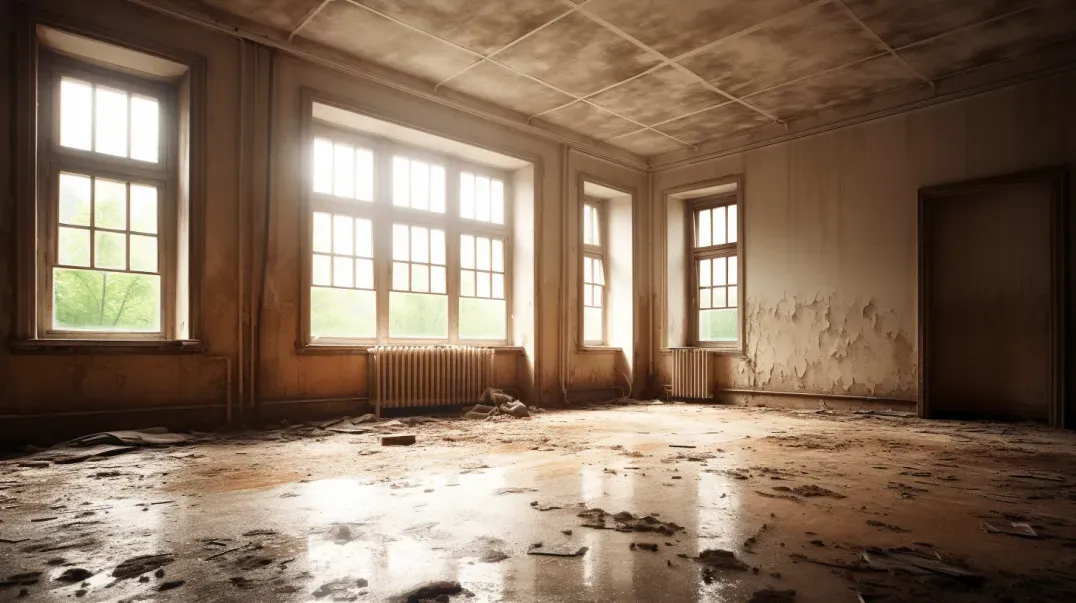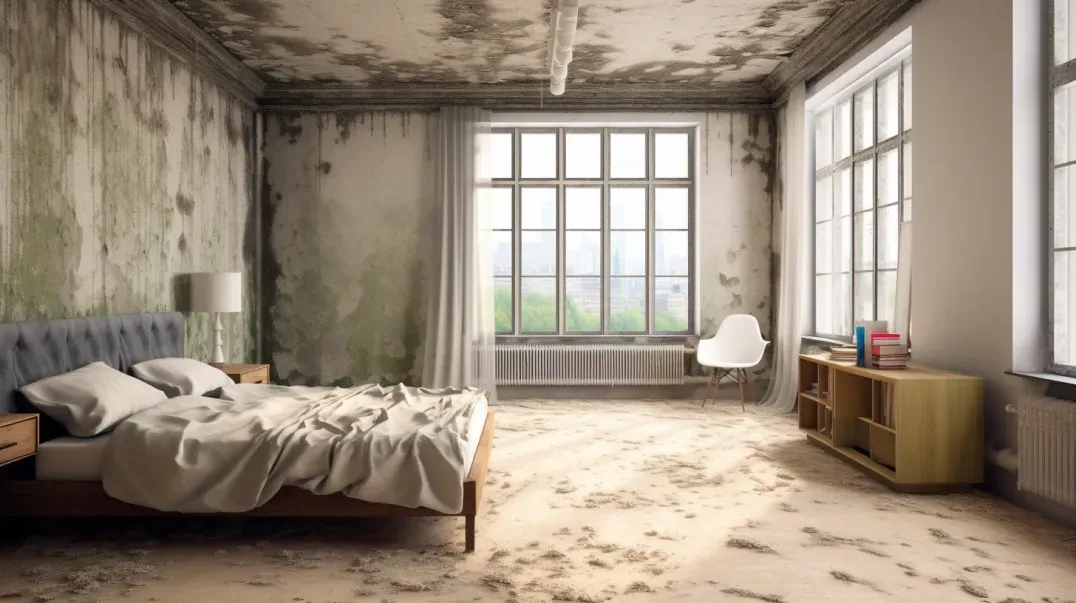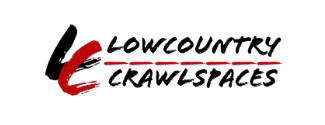The Health Risks Associated with Indoor Mold Exposure
Indoor mold is more than just an unsightly inconvenience; it's a pervasive environmental issue that can significantly impact health and home environments. Engaging deeply with this topic, we are invited to explore not only the conditions that foster mold growth but also the broader implications it has on our daily lives. Just as we annotate texts to draw deeper meanings and connections, this blog will serve as an annotated exploration into the silent yet widespread presence of mold in our living spaces.
Mold thrives under specific environmental conditions—primarily areas with moisture, warmth, and limited airflow. These conditions are often hidden from plain sight, embedded within the walls of our homes or lurking in damp basements, making mold both commonplace and frequently overlooked. Through a detailed analysis, this blog will annotate the environmental playbook of mold, marking and explaining how ordinary household activities and structural vulnerabilities contribute to its proliferation.
As we peel back the layers of this unassuming yet critical topic, we aim to connect the dots between scientific understanding and personal experience. Each section of this blog will not only highlight the scientific aspects of mold growth but also integrate personal anecdotes and expert insights. This approach mirrors the process of making textual annotations, where we not only interpret the literal content but also contextualize and personalize the information, thereby enriching our understanding and engagement with the material.
By annotating our exploration of indoor mold, we invite readers to see beyond the surface—to understand the causes, recognize the signs, and take proactive measures against mold. This comprehensive guide will not just inform but also empower homeowners, tenants, and property managers to create healthier living environments, transforming the way we interact with and respond to the hidden dangers in our homes.
Understanding Mold
Delve into the hidden world of mold—an omnipresent yet often unnoticed inhabitant of our homes. This section of our blog acts as a comprehensive guide, akin to an annotated text, where each explanation serves to deepen your understanding of mold and its environmental significance. By dissecting the conditions under which mold thrives and how it spreads, we invite you into an engaging exploration aimed at demystifying the misconceptions and elucidating the facts about mold in indoor environments.
What is Mold?
Mold Defined:
Mold is a type of fungus that comprises small organisms found almost everywhere. In the outdoors, molds play a crucial role in nature by breaking down dead leaves, plants, and trees. However, they can become problematic when they take root inside our homes. Here, we will annotate the typical characteristics of mold, much like footnotes in a scholarly article, to provide you with a clear and concise definition.
Common Types of Mold in Homes:
Explore the most common types of mold such as Cladosporium, Penicillium, and Aspergillus. This section will function like a mini glossary, describing each type’s unique attributes and potential impacts on health and home environments.
Conditions Under Which Mold Thrives:
Annotation here is key to understanding how seemingly innocuous conditions can foster mold growth. We will detail the optimal conditions such as moisture, warmth, and organic material that mold requires to grow, using annotations to link these conditions to common household scenarios, helping you pinpoint potential mold hotspots.
How Mold Spreads in Indoor Environments
The Role of Mold Spores:
Mold reproduces through spores, which are tiny and lightweight, allowing them to travel through the air. Here, annotations will be used to explain the nature of mold spores, making parallels to dust particles to help illustrate their pervasive nature.
Common Areas for Mold Growth:
This segment will use the concept of annotation to map out common household areas prone to mold growth, such as bathrooms, kitchens, and basements. We’ll provide visual annotations in the form of images or diagrams, highlighting these areas and offering tips on how to identify and mitigate mold growth effectively.
Health Risks of Mold Exposure
This section of our blog serves as a critical examination of the health risks posed by mold exposure in indoor environments. By annotating these risks, we aim to provide readers with a deeper understanding of how mold affects health and how these effects can vary from immediate to long-term complications. Each point discussed will be annotated to draw connections between scientific knowledge and everyday health experiences, enhancing reader engagement and comprehension.
Immediate Health Effects
In this segment, we will explore the initial health symptoms caused by mold exposure, annotated to help readers quickly identify and understand their potential health risks:
Allergic Reactions:
Understand the common allergic responses to mold, such as sneezing, runny nose, and itchy eyes. Annotations here will link these symptoms to the immune system’s reaction to mold spores, providing insights into why these reactions occur and how they might be mitigated.
Respiratory Symptoms:
Detailed annotations will explain how mold spores can affect the respiratory system, leading to symptoms such as coughing, wheezing, and difficulty breathing. This is particularly vital for understanding the direct impact of inhaled spores.
Eye Irritation:
Mold exposure can cause red, itchy, or watery eyes. Annotations will connect these symptoms to the irritant properties of mold, offering advice on reducing exposure in mold-prone areas of the home.
Skin Rash:
Annotations will describe the conditions under which mold contact can lead to skin rashes, providing preventive tips and skin care recommendations for those sensitive to mold exposure.
Long-Term Health Complications
The long-term effects of mold exposure are annotated to underline their seriousness and the importance of mold management in homes:
Chronic Respiratory Conditions:
Explore how prolonged exposure to mold can lead to chronic respiratory problems, with annotations linking to studies and data that highlight the progressive nature of these health issues.
Asthma Development or Exacerbation:
This section uses annotations to discuss how mold can trigger new asthma cases or worsen existing conditions, emphasizing the need for mold control in households with asthma sufferers.
Mycotoxin Exposure and Its Severe Health Impacts:
Detailed annotations will provide insights into the toxic effects of certain molds that produce mycotoxins, which can lead to severe health conditions. This part will annotate the types of molds known for mycotoxin production and their specific health risks.
Legal and Insurance Considerations
This section of the blog functions as an annotated guide to understanding the legal and insurance complexities associated with mold in residential spaces. By elucidating legal terminology and insurance policies through annotations, we aim to empower readers with knowledge that converts into actionable insights, helping them navigate their rights and responsibilities effectively.
Knowing Your Rights and Responsibilities
In this segment, we break down the roles and responsibilities of tenants versus homeowners in mold cases, along with details on insurance coverage for mold damage. Each concept is annotated to provide clarity and context:
Tenant vs. Homeowner Responsibilities in Mold Cases:
Annotations here will delineate the legal distinctions between tenants and homeowners when it comes to mold remediation. This includes who is legally responsible for addressing mold issues and maintaining a safe living environment. We will annotate scenarios that commonly arise in rental agreements and homeowner situations to offer readers a practical understanding of their specific obligations.
Insurance Coverage for Mold Damage:
This section will include annotations that explain the typical provisions and exclusions related to mold in property insurance policies. We will provide examples of when mold damage is likely to be covered and highlight important clauses that homeowners and renters should be aware of to ensure they are adequately protected.
Legal Actions in Severe Cases
For instances where mold exposure results in significant health or property damage, this segment will guide readers through the appropriate legal responses:
When and How to Seek Legal Advice:
Annotations will map out the steps to take when considering legal action, including how to document mold damage and health effects effectively. This includes tips on gathering evidence, seeking medical documentation, and finding a lawyer specialized in environmental or property law.
Potential Outcomes of Legal Actions for Health Damage Due to Mold:
Here, we will use annotations to discuss possible legal outcomes, such as settlements, court rulings, and compensations. Each annotated note will connect legal precedents and typical court decisions to the reader's potential case outcomes, offering a realistic perspective on what to expect from the legal process.
Identifying Mold in Your Home
This segment of the blog is designed as an annotated guide, aiding readers in the detection and understanding of mold in their living spaces. By providing annotations alongside descriptions of mold signs and testing procedures, we aim to deepen the reader's knowledge and proactive capabilities in identifying potential mold issues.
Signs of Mold Presence
This subsection elaborates on how to spot mold through visual and olfactory signs, with annotations that add depth and context:
Visual Indicators and Common Locations:
Detailed annotations will outline the visual signs of mold, such as discoloration or fuzzy growths on surfaces, and specify the common locations within a home where mold is likely to appear, such as bathrooms, kitchens, and basements. These annotations will connect to tips on preventing mold growth in these areas by managing humidity and ensuring adequate ventilation.
Musty Odors: What They Mean and Why They Matter:
Here, annotations will explain the significance of musty odors as indicators of mold presence, often detectable before mold becomes visibly apparent. This section will annotate the chemical processes behind these odors and offer practical advice on how to investigate and address the underlying causes.
When to Test for Mold
Understanding when professional intervention is necessary is crucial for effective mold management. This subsection will use annotations to clarify the situations that warrant professional testing and the methods used by experts:
Situations That Require Professional Mold Testing:
Annotations will identify specific scenarios where professional mold testing becomes essential, such as after water damage, when persistent health symptoms are present, or when mold is suspected but not visible. Each scenario will be annotated with guidance on how to proceed and the importance of timely intervention to prevent further damage or health risks.
How Professionals Assess Mold Presence and Extent:
This part will detail the tools and techniques professionals use to detect and assess mold, with annotations explaining each method's purpose and effectiveness. Techniques such as air sampling, surface swabs, and infrared inspections will be annotated to illustrate how they contribute to a comprehensive understanding of a mold problem's scope and severity.
Preventing and Addressing Mold Issues
This section of the blog is crafted as an annotated guide, providing readers with essential strategies to prevent mold growth and effectively address it if it occurs. Through detailed annotations, we aim to enrich the readers' understanding, connecting practical steps to their underlying scientific principles and enhancing overall engagement with the material.
Prevention Tips
Preventing mold begins with understanding and managing the environmental conditions that encourage its growth. This subsection will use annotations to highlight practical prevention tips:
Maintaining Proper Ventilation:
Annotations will explain how adequate ventilation helps mitigate mold growth, particularly in high-moisture areas like kitchens and bathrooms. Tips on how to improve home ventilation, such as using exhaust fans and opening windows when appropriate, will be detailed with annotations linking to the effects of stagnant air on mold proliferation.
Controlling Humidity Levels:
Maintaining indoor humidity levels between 30% and 50% is crucial for preventing mold. Annotations in this section will delve into the methods of controlling humidity, such as using dehumidifiers and air conditioners, and explain the scientific basis for these recommended humidity ranges.
Regular Cleaning and Checking for Water Leaks:
Regular home maintenance can prevent mold by addressing its sources. Annotated notes will guide readers through checking for and repairing leaks in roofs, pipes, and windows, and emphasize the importance of routine cleaning to prevent organic material accumulation that molds feed on.
Remediation Strategies
When mold occurs, knowing how to address it effectively is crucial. This subsection will annotate remedial strategies, distinguishing between situations appropriate for DIY approaches and those that require professional intervention:
When to Call a Professional for Mold Remediation:
Annotations will outline the scenarios in which professional mold remediation is necessary, such as when large areas (over 10 square feet) are affected or when mold is found in HVAC systems. This guidance will be annotated with legal and safety considerations to help readers make informed decisions.
DIY Mold Cleanup Tips (for Minor Cases):
For smaller mold issues, DIY strategies can be effective. This section will provide annotated step-by-step instructions on how to safely clean mold using solutions like diluted bleach or vinegar. Annotations will include safety tips, such as wearing gloves and masks, and explain why certain cleaners are preferred for different types of surfaces and mold species.
FAQs
Contact Lowcountry Crawlspaces Today!
Lowcountry Crawlspaces will do everything we can to ensure your experience with us is excellent.
Request A FREE Estimate
CHECKOUT RECENT POST



Schedule Your FREE Crawl Space Evaluation Today
There Is No Crawl Space Job We Can’t Fix!




